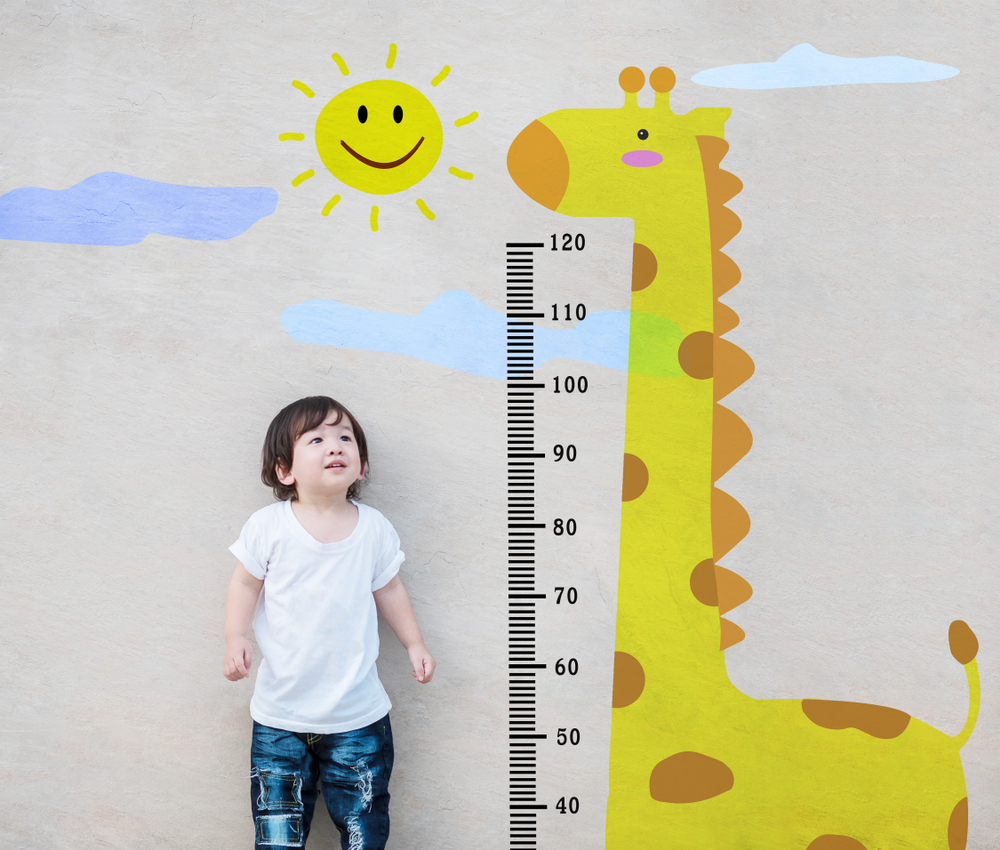Interpreting data Measurement Worksheets for Ages 7-9
5 filtered results
-
From - To
Explore our engaging "Interpreting Data Measurement Worksheets" designed specifically for children aged 7 to 9! These worksheets provide a fun and interactive way for young learners to develop their measurement and data interpretation skills. Each activity encourages critical thinking as students analyze charts, graphs, and tables, fostering their ability to read and interpret essential information. Perfect for classroom use or at-home practice, these worksheets align with educational standards to enhance math comprehension. Support your child’s learning journey while building their confidence and curiosity about the world through effective measurement concepts. Download now to help your child excel in data interpretation!
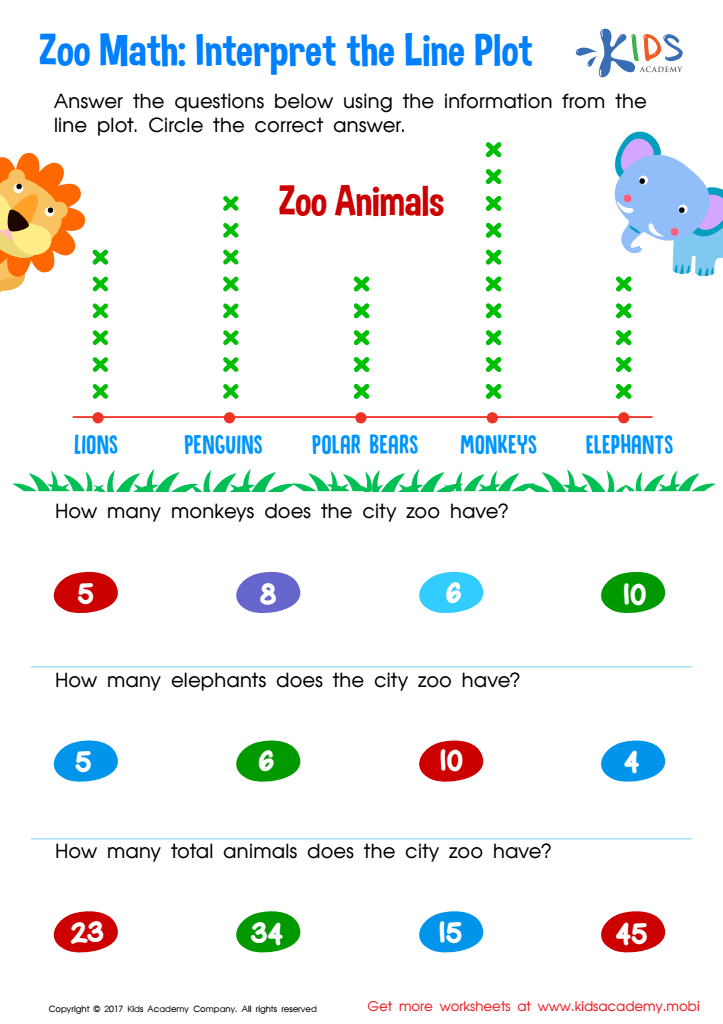

Interpret Line Plot Worksheet
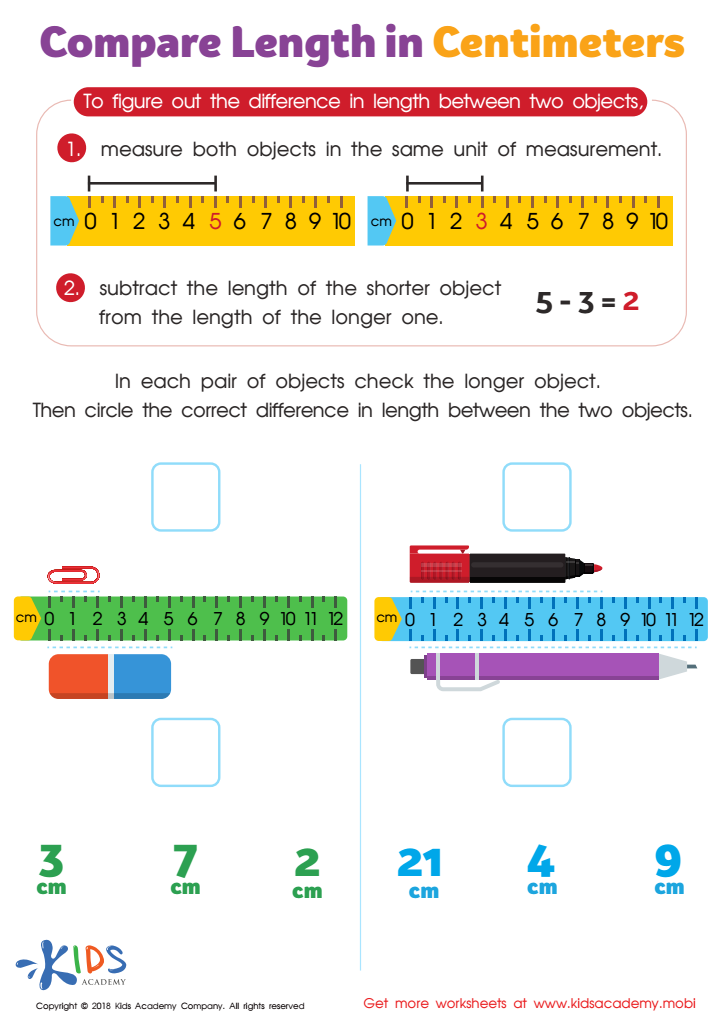

Compare Length in Centimeters Worksheet
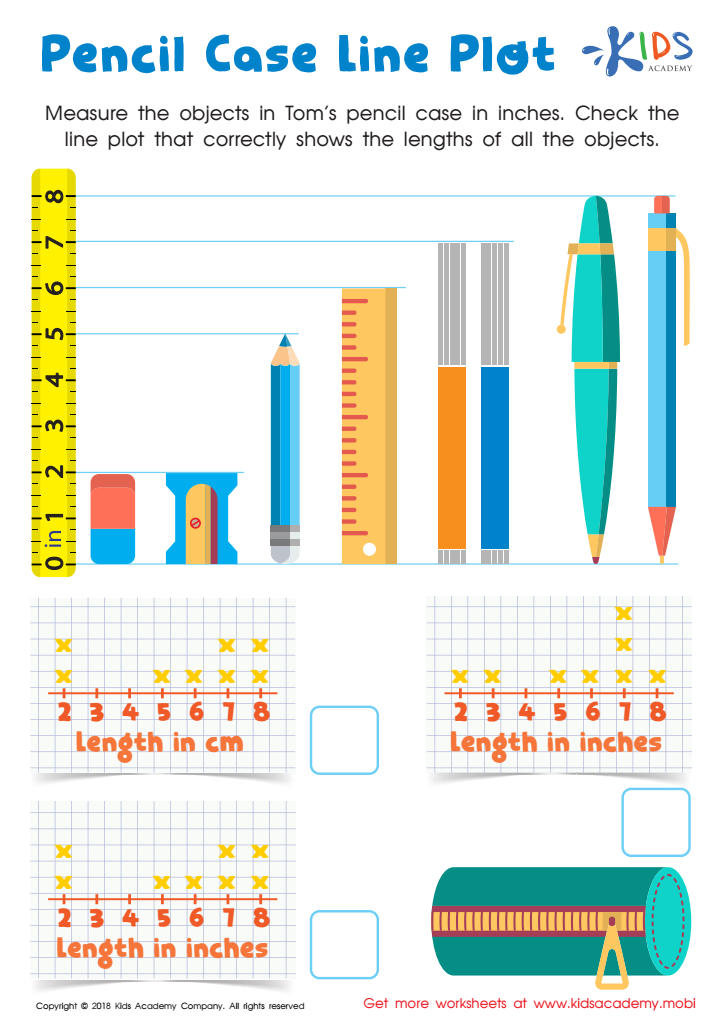

Pencil Case Line Plot Worksheet


Zoo Height Contest Worksheet
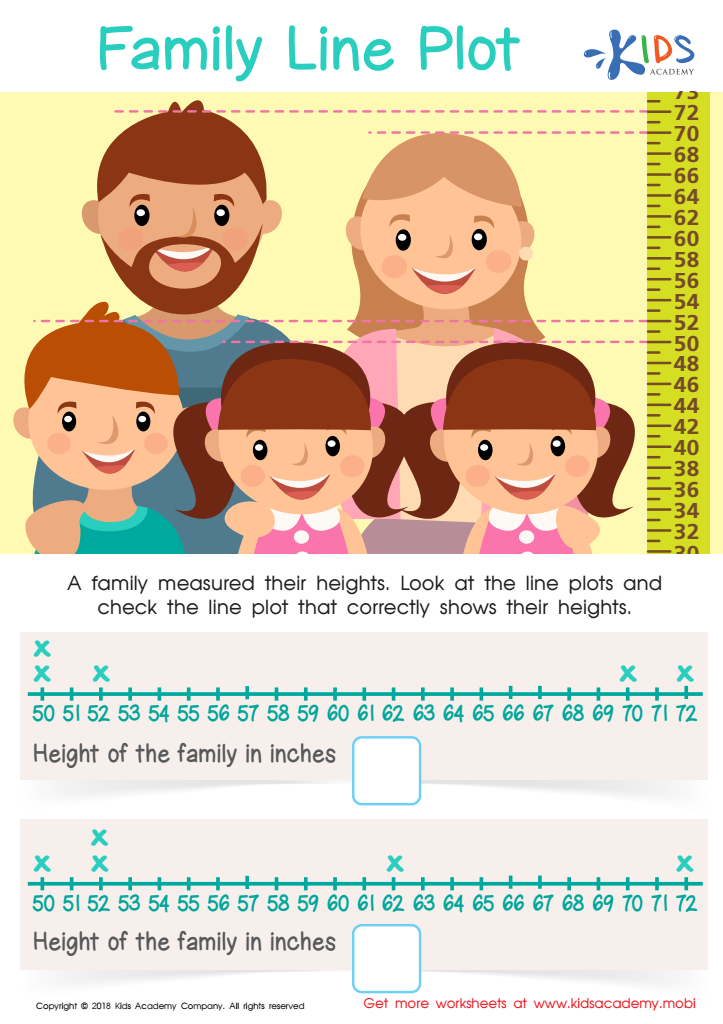

Family Line Plot Worksheet
Parents and teachers should prioritize interpreting data measurement for children ages 7-9 as it lays a foundational skill for their cognitive and academic development. At this age, children are becoming more adept at understanding and handling quantitative information, making it a prime time to introduce them to basic data concepts.
Understanding data measurement helps children develop critical thinking skills, enabling them to analyze and interpret information rather than simply relying on technology. It teaches them to identify patterns, make predictions, and draw conclusions based on evidence, all of which are essential skills for success in science, mathematics, and beyond.
Moreover, interpreting data fosters a sense of curiosity and inquiry. When children experiment with collecting and measuring data—from simple classroom surveys to understanding graphs—they engage actively with their world, enhancing their learning experience.
Additionally, proficiency in data interpretation supports literacy in a data-driven society, where interpreting statistics and graphs is vital. By establishing these skills early on, parents and teachers equip children with tools to navigate future academic challenges and everyday life, including making informed decisions based on data. Overall, prioritizing data measurement interpretation advances both educational outcomes and promotes lifelong learning.
 Assign to My Students
Assign to My Students








